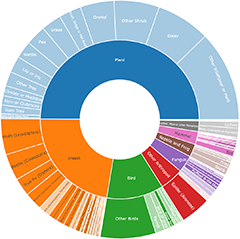Kangaroos & Wallabies
Announcements
There are currently no announcements.
Discussion
DonFletcher
wrote:
9 Oct 2025
Hi @Christine, you are correct. There were ~6,500 in the ~15 sq km Gudgenby Grassland last time they were counted, ie around 430/sq km. The abundant dingo population at gudgenby has only a small effect, because once a prey population reaches high density it is regulated mainly by food, not mainly by predation. Most animal predators can maintain low prey abundance, but not reduce high to low. That is a high density of kangaroos but Eastern Grey Kangaroos densities over 700/sq km have been recorded in Canberra and in Victoria.
Macropus giganteus
DonFletcher
wrote:
8 Sep 2025
You and everyone. Photos have been doing the rounds for days, talking about what it is. It is probably extremely valuable to collectors, so I have suppressed the location though it may be too late already.
Wallabia bicolor
DonFletcher
wrote:
8 Sep 2025
The seal point pattern is more rare than ordinary leucism
Wallabia bicolor
Top contributors
- Frecko 506
- MartinPredavec 139
- HelenCross 127
- MichaelBedingfield 126
- RodDeb 113
- MB 106
- JimL 98
- MatthewFrawley 96
- AlisonMilton 89
- Mike 77
Top moderators
- DonFletcher 772
- MichaelBedingfield 625
- MichaelMulvaney 443
- Frecko 413
- Liam.m 379
- MartinPredavec 370
- JoelStibbardBCT 159
- Shell.S. 63
- PotorooProject 53
- Darcy 47
















































